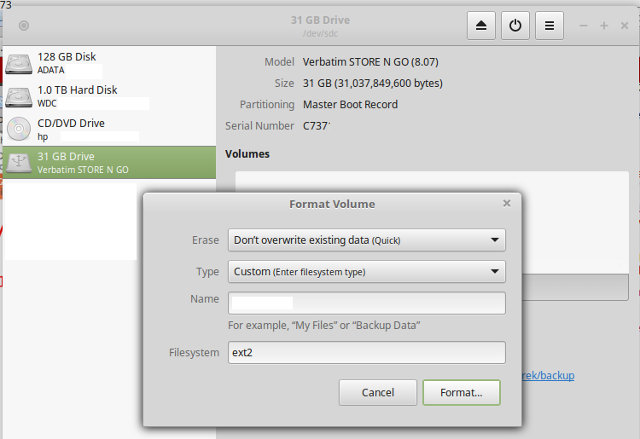USB Flash Drive
A USB flash drive is a type of Solid State Removable Storage, also known as a thumb drive, pen drive, jump drive, flash-drive, memory stick or USB memory, is a data storage device that includes flash memory with an integrated USB interface. It is typically removable, rewritable and much smaller than an optical disc.
USB flash drives are often used for the same purposes for which floppy disks or Rewritable Compact Discs were once used. Additionally, they are immune to electromagnetic interference and are unharmed by surface scratches. Until about 2005, most desktop and laptop computers were supplied with floppy disk drives in addition to USB ports, but floppy disk drives have become obsolete after widespread adoption of USB ports and the larger USB drive capacity compared to the 1.44 MB 3.5-inch floppy disk.
USB flash drives use the USB mass storage device class standard, supported natively by modern operating systems such as Windows, Linux, macOS and other Unix-like systems, as well as many BIOS boot ROMs. USB drives with USB 2.0 support can store more data and transfer faster than much larger optical disc drives like CD-RW or DVD-RW drives and can be read by many other systems such as the Xbox 360, PlayStation 3, DVD players, automobile entertainment systems, and in a number of handheld devices such as smartphones and tablet computers, though the electronically similar SD card is better suited for those devices.
A flash drive consists of a small printed circuit board carrying the circuit elements and a USB connector, insulated electrically and protected inside a plastic, metal, or rubberised case, which can be carried in a pocket or on a key chain, for example. The USB connector may be protected by a removable cap or by retracting into the body of the drive, although it is not likely to be damaged if unprotected. Most flash drives use a standard type-A USB connection allowing connection with a port on a personal computer, but drives for other interfaces also exist. USB flash drives draw power from the computer via the USB connection. Some devices combine the functionality of a portable media player with USB flash storage; they require a battery only when used to play music on the go.
Recommend File System for Linux Use
Avoid journaled file systems with a USB stick because they do many more write and reads to do the jounaling. USB sticks only have a limited life. Ext4 is the often recommended file system for USB flash media, however, it is a journaling file system.
Ext4 is the default file system on most Linux distributions. If you’re formatting an external drive you want to share with other operating systems, you shouldn’t use Ext4 because Windows, macOS, and other devices can’t read Ext4 file systems without the use of 3rd party drivers.
So, Ext3 is a journaling filesystem, and if installed to boot from the flash media, it will increase i/o activity. What is journaling? It is a means to prevent data corruption from crashes and sudden power loss. Every modern file system supports journaling. File systems that don’t offer journaling are available for use on removable flash drives, where you don’t want the higher overhead and additional writes of journaling.
Ext2 is not a journaling file system Ext2’s lack of a journal means it writes to disk less, which makes it useful for flash memory like USB drives. It is a good choice to use on a USB flash drive if the drive will only be used for Linux systems. Otherwise you should use exFAT or FAT32. FAT32 has some annoying limitations though.
- LINUX USE ONLY: Recommend ext2
- LINUX, WINDOWS, MAC: Recommend exFAT
To format your USB Flash Drive under Linux, run the program "Disks" under the menu, or from the command line:
gnome-disks
Select the appropriate drive and the button with a picture of two gears on it has a menu with the format option.
Related
- A flash drive is a type of Solid State Removable Storage.
- Bootable USB flash drive utilities allows you to make the flash drive bootable. More on Creating bootable USB Flash Drive.
- Should you use NTFS or exFAT on Flash Drive?
- Partition and Format a USB Flash Drive with Linux
- Ubuntu Installation from a Flash Drive.
- USB Device Diagnostics in Linux
- Solid State Computer Systems use Solid State Removable Storage rather than a traditional hard drive with moving parts.
- Manufacturers of USB Flash Drives should never include Autorun software on the drive because of the Sandisk U3 Flash Drive Virus fiasco, also why I will never buy a Sandisk product again.
